Philipp Gross takes a look at a slightly different Tiger 1 kit…
Everyone knows the Tiger, so there’s not much to add here. Rye Field Model started in 2015 with an all-new Tiger I for the Tunisian Campaign followed by another kit for a Tiger of the 503rd Heavy Tank Batallion. This one, released earlier this year, is their third Tiger kit and depicts those used by Kampfgruppe Fehrmann, an ad-hoc formation that went into combat in Northwest Germany in March and April 1945. The Tigers of that unit were leftovers taken from army depots and training units which often had received various upgrades over the years, most notably the later steel wheels and Zimmerit. A comprehensive account of that unusual Tiger unit can be found in Wolfgang Schneider’s book Tigers in Combat vol. 2.
Now, the kit:
You might be surprised to hear that the kit comes in a cardboard box. To be honest, it’s a very well made box with high quality prints of the kit’s features on the outside.
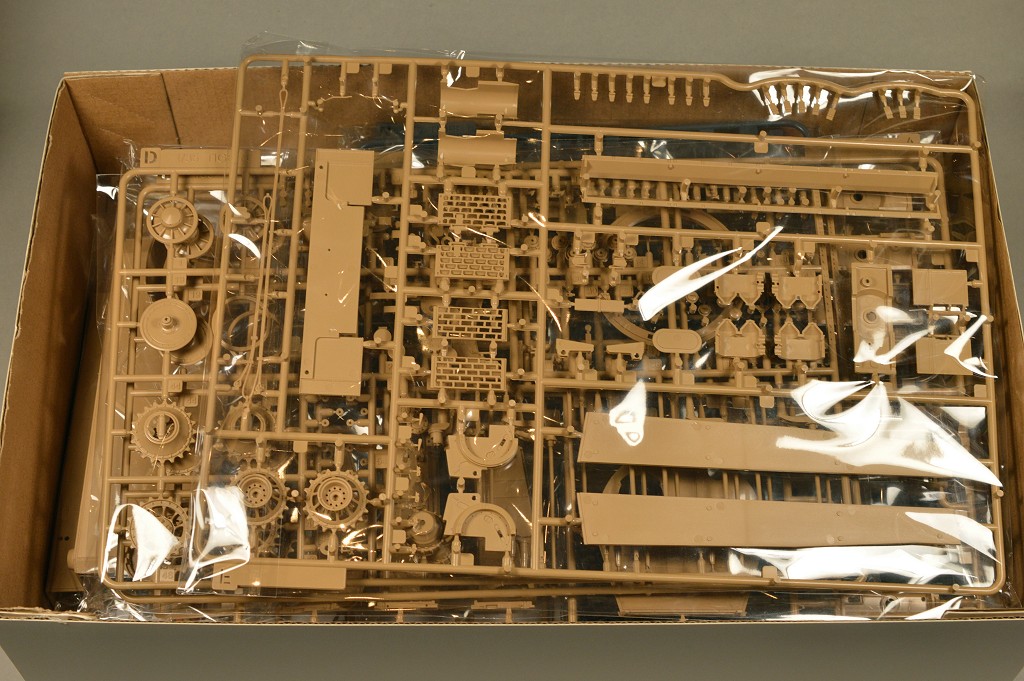 The box is also rather full. If you don’t memorize the way the contents were packed inside when you first opened it, you’ll have a problem getting everything back inside again. Did I mention it’s a very nice box? Every sprue is packed in a resealable plastic bag. Quite fancy.
The box is also rather full. If you don’t memorize the way the contents were packed inside when you first opened it, you’ll have a problem getting everything back inside again. Did I mention it’s a very nice box? Every sprue is packed in a resealable plastic bag. Quite fancy.
Sprue A:


You get both initial and later turret parts as an option, which was a pleasant surprise. The gun barrel is made up of several slide-moulded sections, which should be far superior to the usual 2 halves method. The stowage box has nice rivet details along the edges.
Sprue B: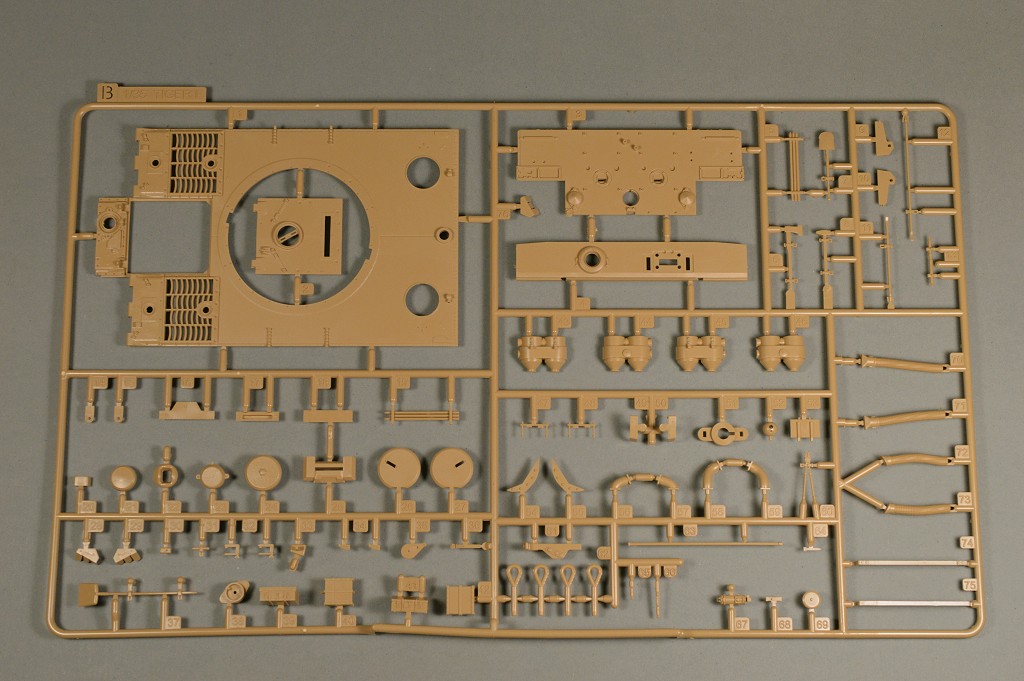
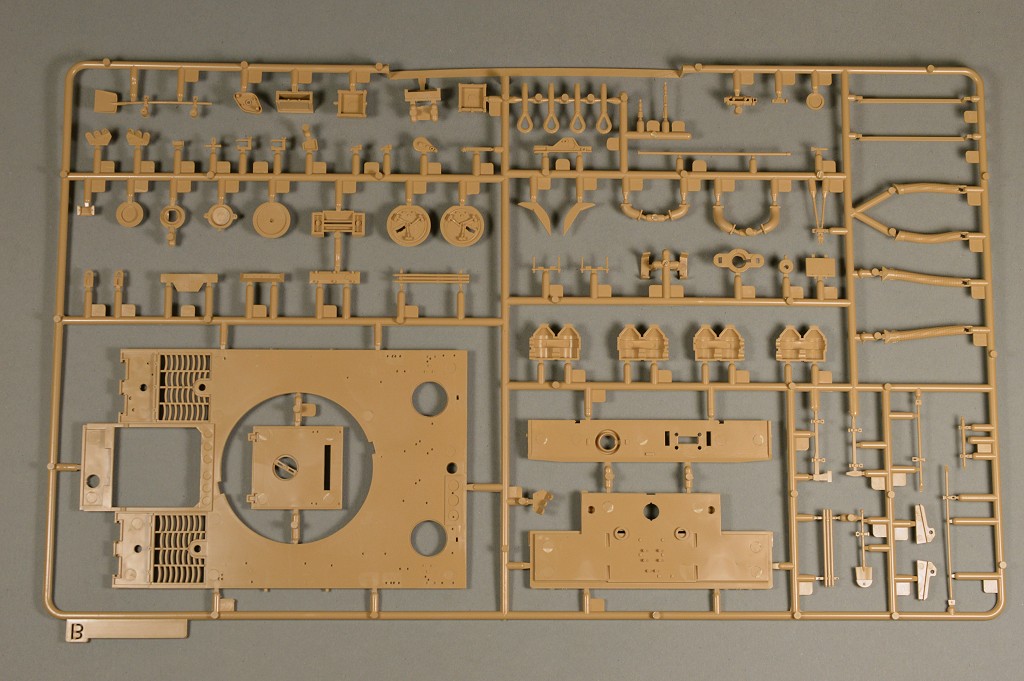
It’s not needed on the Fehrmann Tigers, but there’s still a full set of Feifel air filers included. Quite useful if you intend to build an earlier version with it. A little problem is the lack of a later style glacis plate without the driver’s extra periscopes, but it should be far easier to fill the holes with putty than to drill them into a glacis plate which lacks them.
Sprue C:
Another surprise, the early style wheels are included as well. Which makes this kit suitable for recreating about any Tiger built between January and July 1943, at least if you’re willing to look for early tracks and other decals. One of the Fehrmann Tigers still had its original wheels, which seems to be the reason for their inclusion. Every other “Fehrmann” kit only comes with the late wheels.
Sprue D:

The kit features a workable torsion bar suspension. Most people won’t need it, but it’s a nice option if you want to place your finished Tiger on a diorama. The workable tracks make it fairly easy (more on that later)
Note the location of the spare track hangers on the sprue – just cut the whole lot off and attach them all to the turret while still on the sprue. Perfect placement made easy!
Sprue O:

Tools and a leftofer 503 style turret bin. Your spares box will be happy.
Sprue X: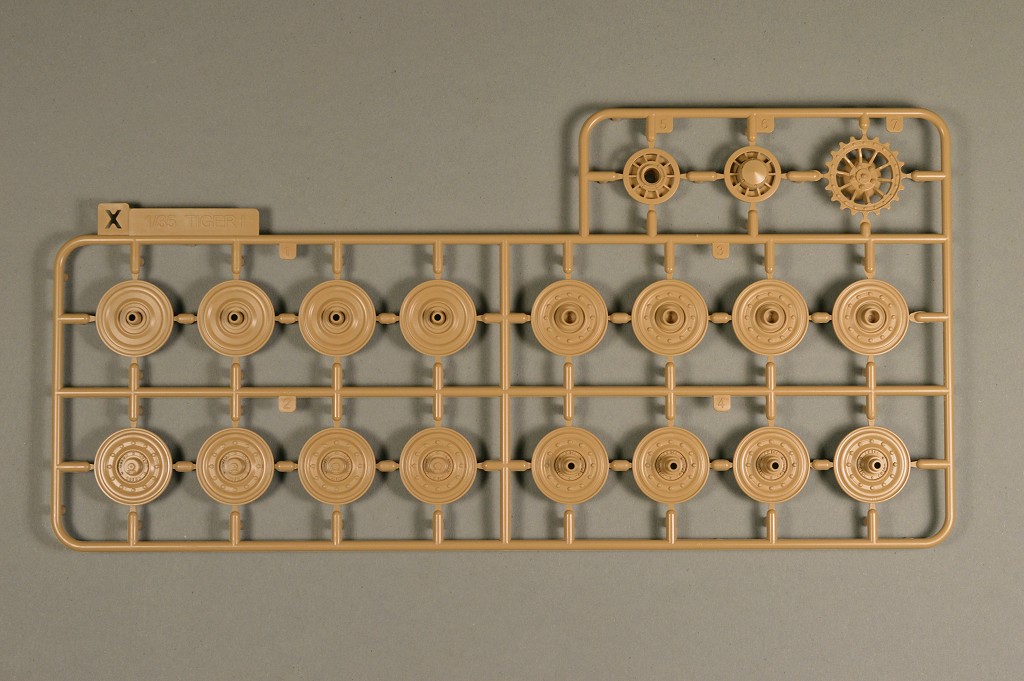
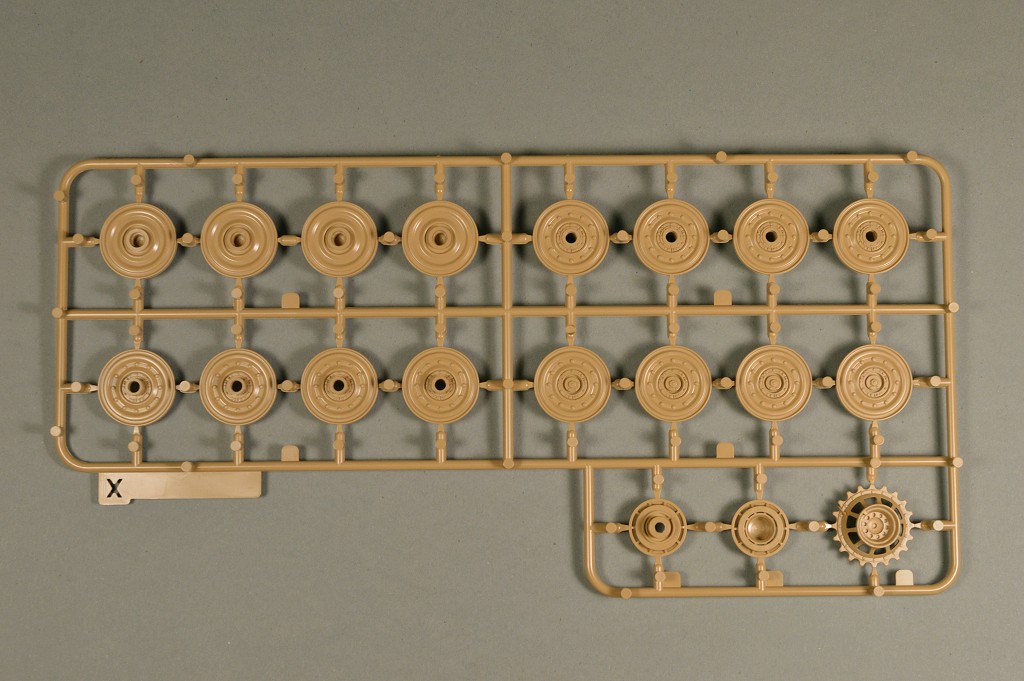
Tracks: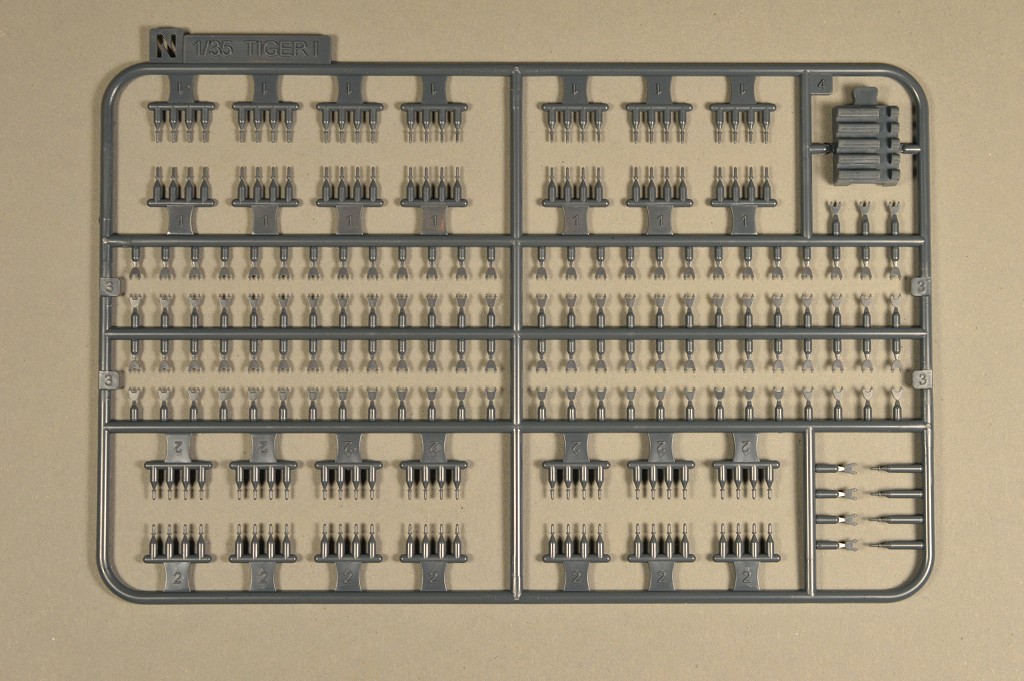



The tracks are of the later style used on Fehrmann Tigers. Each link consists of five parts – link, two guide horns, two track pins. There’s a jig included to make assembly a little easier. The pins are supplied in pairs of four, which is also quite helpful. The track links come in a fancy clear plastic box.
Hull:

The hull comes as a single piece, with excellent detail all around. The hull sides are extra pieces.
Clear parts for the cupola, periscopes and various vision ports are all included, as well as copper wire for the tow cables. In my opinion copper is far easier to work with than steel.
The photoetch includes the usual grilles as well as tool clasps of various types. Those already moulded on don’t look too bad, so this is really more of an option if you want to go the extra mile – or depict the tools missing.
The decals cover Tigers F01 to F05 and F13, most of which are well documented. Some Tigers seem to have had coloured turret markings with a white outline. Considering the hand-painted nature of these, it’s no big deal to apply a colour of choice onto the decals with a brush.
Finally, a photo-etched Zimmerit tool is included. No instructions on how to use it, but I appreciate the gesture.
Instructions:
Printed in full colour with some extra pages on Zimmerit placement on the Fehrmann Tigers. Each step seems simple enough and optional parts are mentioned, though not with information which is suitable for which tank.
Conclusion:
Well, it looks good. Really good. It’s obvious some real effort went into their Tiger kits. It’s certainly not a beginner’s kit, but should pose no problem for anyone with a little experience in the hobby. The many optional parts will certainly please the experts who can tell a Tiger’s production week and the foreman’s dog’s middle name by a blurry photo. For us mere mortals, there are lists on the internet that tell you which parts are suitable for your particular vehicle.
If there are any fit problems, the following build log will identify them. In the meantime, the fact that it’s quite a bit cheaper than most Dragon Tigers should be reason enough to give it a try.
Click here for the build log. See the finished model here.
















